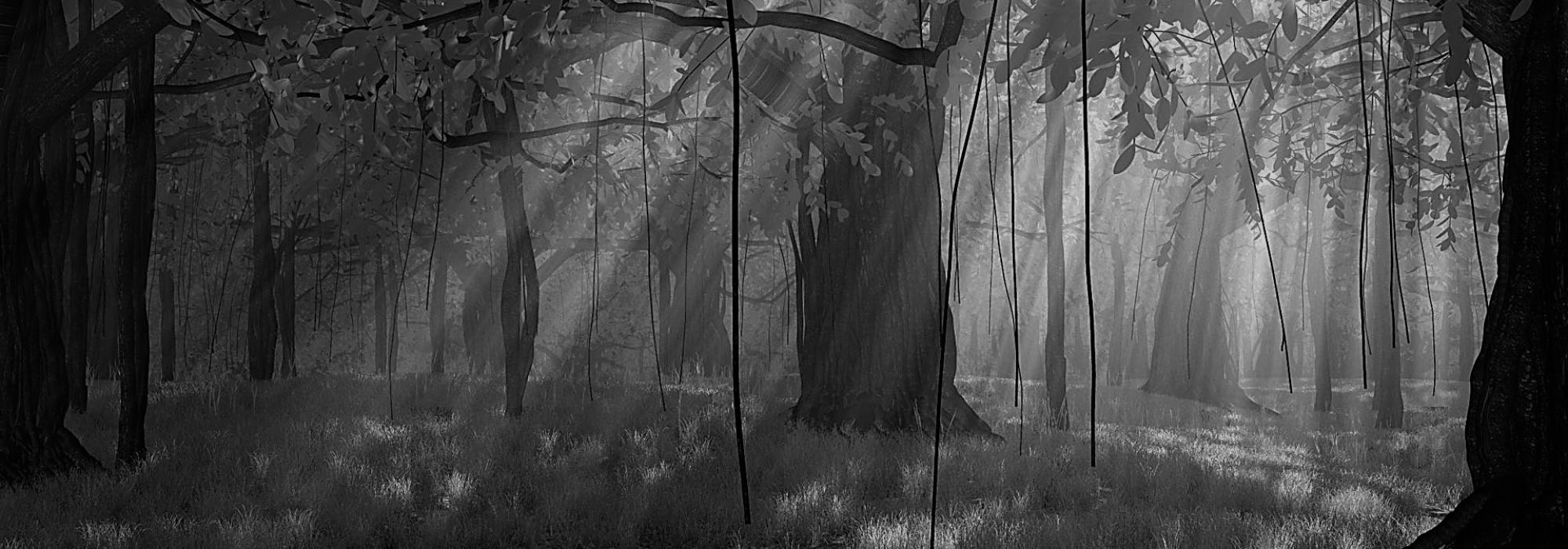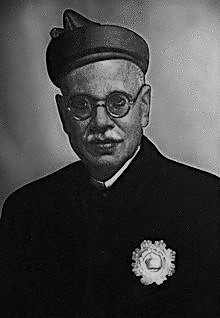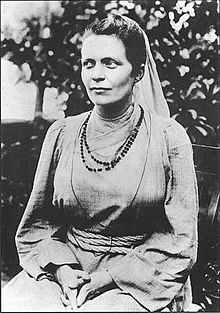The following is a transcript of the author’s Presidential Address at ‘Samskriti Naimishey,’ a cultural symposium held at Bangalore on 18.08.2017.
I am glad that a new initiative Saṃskṛti Naimiṣeya has sprung up to rejuvenate the intellectual vibrancy and interplay of minds traditionally associated with the Naimiṣa forest located on the banks of the river Gomati. The loftiest personages of the nation used to gather there for scholastic pursuits. Naimiṣa thus acquired both epic and iconic connotations. Whenever there were social or religious crises in society, the Naimiṣa assembly was convened and sages were sent for.
Knowledge of the past and guidelines for invigorating society which emerged from Naimiṣa emerged as beacon lights for the entire populace of the country. Today, when the society is faced with multiple crises, there is a need for informed and independent minds to come together for stock-taking.
In some quarters such endeavours are described as revivalist or self-assertive. But this needs to be viewed from the other end of the tube. Hindus’ habitual self-effacement and negationism’s onslaughts have gone on for so long that the merest effort at imbalance-correction now appears over-assertive. Much labour has been expended in self-defense. We should now move on. As knowledge-workers, let us intensify our efforts to arrive at a level playing field. Such recovery, to begin with, calls for a clear and in-depth understanding of the lie of the land.
Art and culture have been mentioned as focal areas of Saṃskṛti Naimiṣeya. In the Indian tradition, no aesthetic pursuit can be totally dissociated from the bedrock of philosophical terrain. The distortions we may find in the realm of aesthetics are eventually traceable to erosion that has set in in perceptions of philosophy. Commoditization of art and such other aberrations are consequences of discontinuity in the philosophic stream. Perhaps these aberrations are less discernible in classical music than in plastic arts.
Colonization of the Hindu mind is a frequently rehashed subject and there is no need to hold forth about it at great length. A very brief recap may be adequate for the present, only with a view to contextualize Saṃskṛti Naimiṣeya.
One must ungrudgingly acknowledge the services of European savants in generating interest in Sanskritic studies after mid-eighteenth century. Their contribution was like the proverbial curate’s egg – good in parts. While some lacked a background of the nature of Hindu religion and philosophy, some had motivation that did not jell well with scholarship. With some rare and honourable exceptions, most European scholars relied almost totally on linguistics and philology. Grammar and philology in our tradition are mere entry-points to the mansion of scriptural exegesis. Unfamiliarity with the Sanskrit tradition was compounded by Christian bias. Thus, the letter of the text gained dominance over the spirit of the words. It also resulted in ludicrous dating. Dates assigned to Pāṇini, for instance, were changed arbitrarily on the basis of the argument that it was unlikely for anyone to possess such sophisticated knowledge at that remote period.
Even profoundly Sanskrit-friendly savants like Winternitz were tied down by such biases. The skewed motivation prompting Macaulay and Max Mueller is often mentioned, but no less insidious were others like Monier Williams, Boden Professor of Sanskrit at Oxford. It was a conditionality of the professorship instituted by Colonel Boden that Hindu scriptural translations promoted by it must enable Britishers to proceed apace in the conversion of the natives of India to Christianity.
Thank heavens there were a few thoroughbred scholars like Theodor Goldstücker who effectively exposed the horrendous inanities perpetrated by Böhtlingk, Roth, Weber and others. Goldstücker called them the ‘Saturnalia of Sanskrit philology.’
Over-indulgence with philology played havoc with meanings of Vedic verses. P V Kane, among others, has pointed out how western translators frequently went adrift by relying exclusively on grammar and comparative philology. The fact that in both Vedic and classical Sanskrit the very same words acquired different contexts was terra incognita to westerners. Their ignorance of the context and the associated philosophy was a double jeopardy. A good many western scholars hired the services of native pandits most of whom had no more than a smattering of Sanskrit.
A verse in the eighty-fifth sūkta in the tenth mandala of the Ṛgveda is used in the marriage ritual. The text speaks of the four stages of a woman’s life – as a child, as a girl, as a young maiden, and mature womanhood. H H Wilson has translated the verse to mean that bride acquired four husbands in succession. We can only pity the readers who, not being familiar with Sanskrit, have to rely on such monstrous translations.
To be fair, Hinduism was not the only victim of such cavalier treatment. Many other religions elsewhere too suffered the same fate. This was a telltale fallout of the colonialist brigandage. Referring to James Legge’s rendering of Confucian classics in the Sacred Books of the East, Lin Yutang wrote, “Legge makes a fetish of literalness as if a certain air of foreign remoteness rather than clarity was the mark of fidelity.”
European scholars of the earlier period like Wilhelm von Humboldt had better philosophical grounding. But by the time Orientalism and Indology were afoot, exigencies of politics and imperialism gradually gained an upper hand, co-opting the likes of Max Müller. Uprooting of functioning native systems and cultural arrangements, economic exploitation, plunder of natural resources and other such scandalous onslaughts are often mentioned. However, we must recognize that the Empire itself was the biggest scandal in history.
There are areas of life wherein continuity through generations is a sine qua non of social vigour. Once that continuity is interrupted, there will be inexorable degeneracy. An instance in point is our unique oral tradition in śāstra learning, which has now been irretrievably lost. Once the thread is broken, it will be impossible to revive or recreate such a legacy. Weakening of this pedagogics has been one of the most tragic consequences of the imperialist project of modernization. Vibrant indigenous intellectual networks were replaced by unsubstantial European models. That corrosive process has continued even seven decades after shedding the foreign political yoke, thanks to the slavish mental makeup of the later-day inheritors of the royal throne.
If all this were mere history, it could be shelved. But the malaise goes much deeper. For instance, the racist legacy bequeathed by Christian Lassen and others continues to influence Mahābhārata studies. Our epics constitute a unique, most valuable and perennial fountainhead of our cultural roots, and have to be freed from the toxicity injected by opinionated and literalist interventionists, both foreign and native. Some native writers, as all of you are doubtless aware, have vivisected the Mahābhārata with half-developed Western sociological tools, ending up with fanciful and perverse theorizations. It is needless to name those eminent writers.
Saṃskṛti Naimiṣeya thus has its job cut out.
Destruction is easy; recovery is painful and cumbersome. It is not merely for sentimental reasons that we are partial to paraṃparā. Our paraṃparā is not mere genetic information; it provides a firm base but does not limit progressive evolution. This dynamism arises from the fact that our society's relationship with paraṃparā is organic, complex, and highly nuanced, as it is shaped and regulated by codes collectively called puruṣārthas. There is thus coherence among the varied levels of existence ranging from the material to the spiritual.
Controversies and confusion have arisen because of mixed-up perceptions in regard to the social, religious, philosophical, spiritual, and mystical realms. The Hindu simultaneously lives in different levels and in different aeons. For the average Hindu, epic characters are more real than contemporaneous persons amidst whom he presently lives. This Weltanschauung needs to be legitimized. Multi-level perception of the world is a fundamental paradigm of our philosophy.
While there is sufficient clarity at the level of Vedanta disquisition, there is need to effectively communicate it to the lay public in a listener-friendly idiom. Saṃskṛti Naimiṣeya could address itself to such needs of the time. It is important to re-connect society with its roots. From received knowledge, individuals must be enabled to graduate to transcendent knowledge. Nothing could be more exciting or fulfilling. Paraṃparā is not a problem but leads to the ultimate fruition, felicity, and consummation. Paraṃparā is the custodian and transmitter, and welcomes all earnest seekers. Paraṃparā is a glorious benefaction, if the seeker approaches it with humility and the requisite discipline.
If we want to re-vitalize Hinduism, we have to take steps to shed many Colonialist encrustations which have persisted – whether you call it revivalism or self-assertion. We have to complete the process of de-colonization by working more rigourously in the cultural front. I believe that Saṃskṛti Naimiṣeya is an initiative in that direction.
Now a few words about the Hindu view of Art. I said at the outset that in the Indian tradition, aesthetic pursuit is an adjunct of philosophy. Art cannot be viewed in isolation. Art is an integral part of life and culture. As in the case of literature, knowledge-systems, etc., Hindu Art too was denigrated under the imperialist project. Indian architecture lacked unity, clarity or classic nobility, said the critics; Indian theatre lacked 'creativity and imagination;' the Dance of Shiva is a 'dance of death or destruction;' and so on. There were, no doubt, some exceptional cognoscenti such as, for instance, Edmund Gilles, who remarked after witness a Kathakali performance, "There seem to be no limits to what we can learn from the Eastern Theatre."
Aurobindo has written at length about the "bitter effects of the great decline which came to a head in the eighteenth and nineteenth centuries." He calls that period "the evening time from which according to the Indian idea of the cycles a new age has to start." Rabindranath Tagore perhaps best represents such an initiation of a New Age. Aurobindo has also spoken extensively about the distinctive nature of genuinely Indian Art: "For the Indian mind form does not exist except as a creation of the spirit and draws all its meaning and value from the spirit. Every line, arrangement of mass, colour, shape, posture, every physical suggestion...is first and last a suggestion, a hint, very often a symbol which is in its main function a support for a spiritual emotion, idea, image that again goes beyond itself to the less definable, but more powerfully sensible reality of the spirit which has excited these movements in the aesthetic mind and passed through them into significant shapes."
This is true also of sculpture, iconography, and temple architecture.
Aurobindo continues: "...the sculpture of ancient and mediaeval India claims its place on the very highest levels of artistic achievement. We shall not find a sculptural art of a more profound intention, a greater spirit, a more consistent skill of achievement. An assured history of two millenniums of accomplished sculptural creation is a rare and significant fact in the life of a people. It is due to the close connection between the religious and philosophical and the aesthetic mind of the people."
We need not waste our time in discussing the vacuity of West-inspired modernism. A distinguished thinker Dr. Maistre has said the last word: "The path of modern culture leads from humanity, through nationality, to bestiality."
Indian culture is deductive in nature, in the sense that human life and its artistic and other endeavours are based on a harmonious relationship between man and the universe. Our aesthetic sense is aroused by the glorious Nature which surrounds us and by the sublimity of inter-connectedness of all life. Our Aesthetics is a royal highway to spiritual experience. It is this dynamics which has resulted in so much richness and variety. Will Durant said, "Probably no other nation known to us has ever had so exuberant a variety of arts... Every garment woven in India has a beauty that comes only of a very ancient, and not almost instinctive art."
The parameters of art in our country were much wider than we now imagine. All life was art. The need is to recover the perspective we have lost by pursuing chimera. It is no co-incidence that Shiva, the primordial god, is the god of dance, and that the dance of Shiva symbolized the constant movement of the world. By aligning ourselves with the vast range of emotions or rasas, we become masters of our own worlds. This process is experiential and not merely cognitional. It is at the level of consciousness that we have to respond to colour or configuration, stasis or movement, breeze or sunrise, flow or ripple, silence or sound, words or intervening spaces. When our heart wakes up, Art presents itself. The temporal and the Eternal mingle. The aim of all noble Art is to help the respondent to discover his Self by the mediacy of symbols.
In this context we could, with profit, recall the observations of Sister Nivedita, who eleven decades ago played a significant role in sensitizing the artist-community about the spirit of Hindu art and the need of the times. Recalling Nivedita is also meaningful as we owe her a tribute in this 150th anniversary year of her birth. Nivedita's words also indicate how totally she was in tune with the spirit of Hinduism. I can do no better than closing this presentation with Nivedita's message to the artists.
"An Indian painting, if it to be really Indian and really great, must appeal to the Indian heart in an Indian way, must convey some feeling or idea that is either familiar or immediately comprehensible; and must further, to be of the very highest mark, arouse in the spectator a certain sense of a revelation for which he is the nobler."
"Art, then, is charged with a spiritual message – in India to-day, the message of the Nationality."
"...art offers us the opportunity of a great common speech, and its rebirth is essential to the up-building of the motherland – its awakening rather."
"For art, like science, like education, like industry, like trade itself, must now be followed "For the re-making of the Motherland" and for no other aim."
I thank you all for your patient hearing.
I wish Saṃskṛti Naimiṣeya a lustrous and fruitful future.

















































